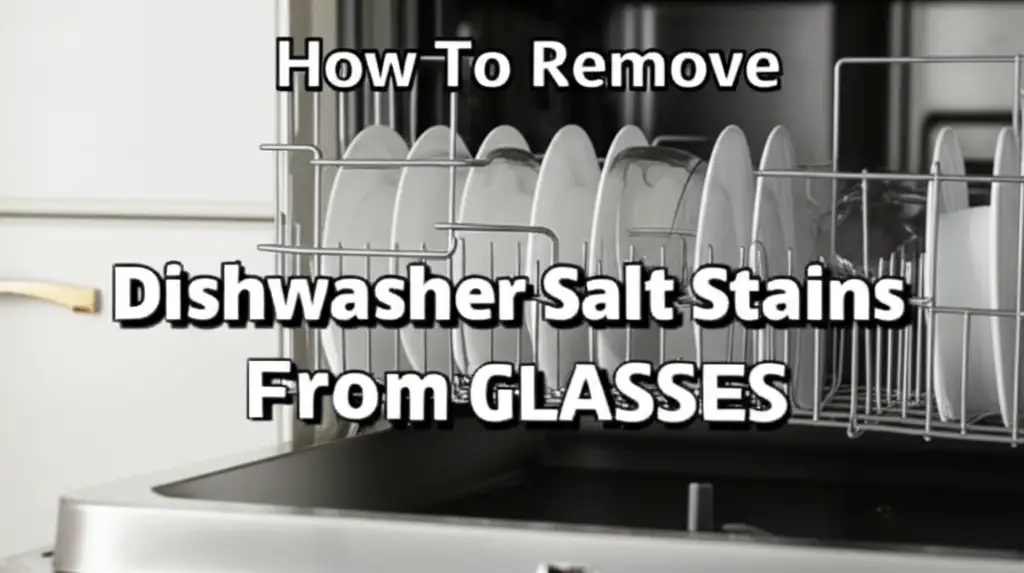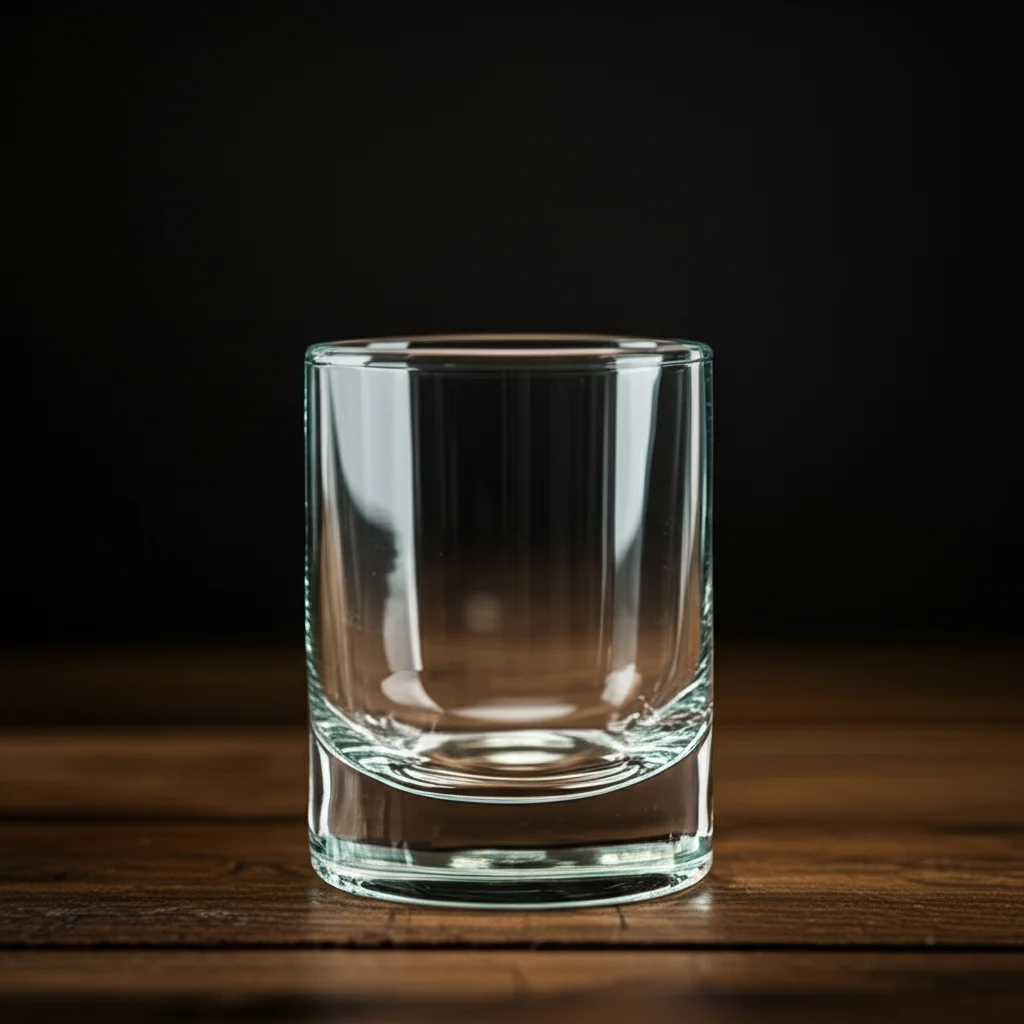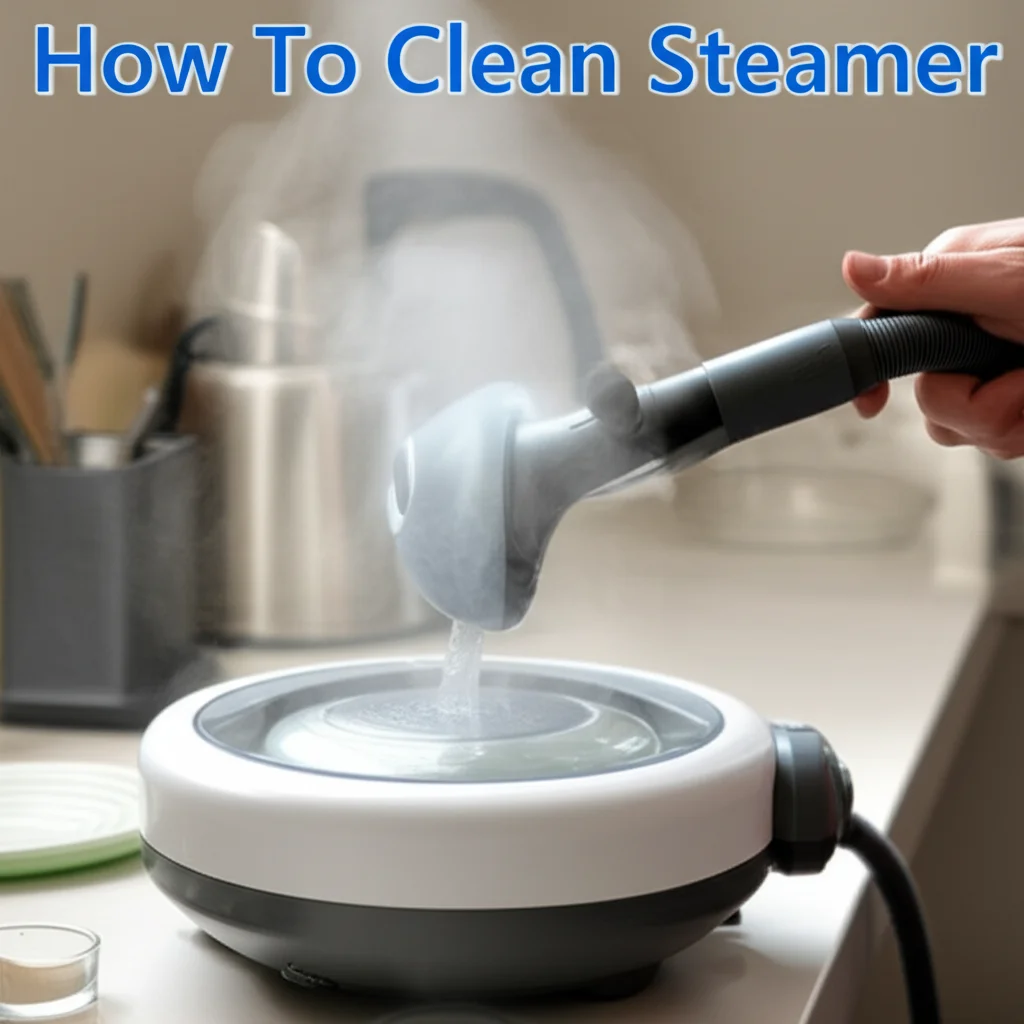· Todd Martin · Home Care · 16 min read
How To Remove Dishwasher Salt Stains From Glasses

Eliminate Dishwasher Salt Stains From Your Glasses
Have you ever unloaded your dishwasher, expecting sparkling clean glasses, only to find them covered in a cloudy, chalky film? This frustrating residue often comes from dishwasher salt or hard water. These unsightly marks can make even the cleanest glasses look dirty. I know the feeling of disappointment when my favorite wine glasses appear dull.
Understanding how to remove dishwasher salt stains from glasses is key to restoring their shine. It also helps in preventing these issues in the future. This article will guide you through simple, effective methods to tackle these stubborn stains. We will also explore the causes of salt stains and provide practical tips for prevention. You will learn how to make your glassware spotless again.
Takeaway: Restore Your Glassware’s Sparkle
- Use vinegar or citric acid for effective stain removal.
- Adjust dishwasher settings for proper salt and rinse aid use.
- Ensure correct dishwasher salt levels and rinse aid refills.
- Understand the difference between salt stains and etching.
How do you remove dishwasher salt stains from glasses? You can remove dishwasher salt stains from glasses using a white vinegar soak or a citric acid solution. For light stains, a simple wipe with a vinegar-soaked cloth often works. For tougher residue, let the glasses soak in a vinegar solution for several hours or overnight.
Understanding Dishwasher Salt Stains on Glassware
Dishwasher salt stains are a common problem for many households. They leave a white, powdery residue on glasses and other dishes. These stains are usually the result of excess dishwasher salt or issues with your dishwasher’s water softening system. The salt itself does not directly cause the stain. Instead, it indicates a mineral imbalance in the water during the wash cycle.
Hard water is the primary culprit behind many dishwasher woes. It contains high levels of dissolved minerals like calcium and magnesium. Dishwasher salt is designed to soften this hard water. It regenerates the ion exchange resin inside your dishwasher’s water softener. If the salt is too much, or not dissolving properly, or the softener setting is wrong, these minerals can redeposit on your glassware. This leads to the frustrating white film. We want our glasses to look their best.
These stains differ from etching, which is permanent cloudiness. Etching results from a chemical reaction between soft water and glass, or high water temperature. Salt stains, on the other hand, are mineral deposits. They can be removed with acidic solutions. Knowing the difference helps you choose the right cleaning method. It also helps in protecting your valuable glassware. You can learn more about differentiating these issues by understanding how to clean cloudy glasses from the dishwasher.
Effective Methods to Remove Salt Stains
Removing dishwasher salt stains from glasses requires a slightly acidic approach. The good news is that common household items often do the trick. You do not need harsh chemicals for this task. I have tried several methods, and some work better than others depending on the severity of the stain.
Vinegar Soak Method
White vinegar is a powerful ally against mineral deposits. Its acetic acid content dissolves the calcium and magnesium that cause salt stains. This method is simple and effective for most cases.
Here is how to use white vinegar:
- Prepare the solution: Fill a basin or your sink with equal parts hot water and white vinegar. For stubborn stains, use undiluted white vinegar.
- Soak the glasses: Submerge the stained glasses completely in the vinegar solution. Ensure all affected areas are covered.
- Soak time: Let the glasses soak for at least 30 minutes. For heavily stained glasses, I often leave them overnight. The longer the soak, the better the vinegar can work its magic.
- Scrub gently: After soaking, remove the glasses and gently scrub the affected areas. Use a soft brush or a non-abrasive sponge. The residue should come off easily.
- Rinse and dry: Rinse the glasses thoroughly with clean water. Dry them with a lint-free cloth to reveal their sparkle.
This method works wonders for general salt film. You might be surprised at the difference.
Lemon Juice and Citric Acid Techniques
Lemon juice contains citric acid, another natural acidic cleaner. It is a good alternative if you dislike the smell of vinegar. Citric acid powder is also available and works similarly.
Using lemon juice:
- Direct application: For light stains, cut a lemon in half. Rub the cut side directly onto the stained areas of the glass.
- Lemon juice soak: Squeeze fresh lemon juice into a bowl. Add a bit of water if needed. Soak the glasses in this solution for a few hours.
- Scrub and rinse: Scrub the glasses gently after soaking. Then rinse them thoroughly with clean water.
Using citric acid powder:
- Create a paste: Mix a tablespoon of citric acid powder with a few drops of water to form a paste.
- Apply and scrub: Apply the paste to the salt-stained areas. Let it sit for 10-15 minutes.
- Gently scrub: Use a soft brush or sponge to scrub the stains away.
- Rinse well: Rinse the glasses completely with fresh water.
These methods are particularly good for tougher stains. They leave a fresh scent. They help to make your glassware look brand new.
Addressing the Root Cause: Dishwasher Maintenance and Settings
Removing salt stains is only half the battle. Preventing them from reappearing is crucial. This often involves proper dishwasher maintenance and adjusting its settings. I have found that a little proactive care saves a lot of cleaning time later.
Correct Dishwasher Salt Usage
Dishwasher salt is essential for dishwashers in hard water areas. It regenerates the water softening unit inside the machine. Incorrect use of dishwasher salt can lead to stains. Make sure you use the right type of salt, specifically designed for dishwashers. Table salt or rock salt can damage your machine.
- Check salt levels: Regularly check your dishwasher’s salt reservoir. Most dishwashers have an indicator light that signals low salt. Refill it promptly when needed.
- Use proper salt: Always use coarse grain dishwasher salt. Fine salt can clog the dispenser.
- Avoid overfilling: Do not overfill the salt compartment. This can cause salt to spill into the wash cycle. This leads to more stains.
If you are unsure how much salt to add, you can find specific guidance on how much dishwasher salt to add to a Miele dishwasher or general advice on how much dishwasher salt you should put in for other brands. For details on how to use specific brands, you can also check out resources like how to use Finish salt for dishwasher.
Optimizing Rinse Aid Levels
Rinse aid is a game-changer for sparkling glasses. It helps water sheet off dishes, preventing spots and streaks. This is particularly important in hard water areas. Without rinse aid, water droplets dry on the glass, leaving behind mineral deposits.
- Check dispenser: Ensure your rinse aid dispenser is full. Like salt, most dishwashers have an indicator for low rinse aid.
- Adjust dosage: Many dishwashers allow you to adjust the rinse aid dosage. If you see spots, increase the dosage. If you see streaks, reduce it slightly.
- Use quality rinse aid: A good quality rinse aid makes a noticeable difference.
You can learn more about how to ensure both these essential components are correctly managed by reviewing how to put rinse aid and salt in dishwasher.
Water Hardness Settings
Your dishwasher has a water hardness setting. This setting tells the dishwasher how much salt to use to soften the water. If this setting is incorrect, you may get salt stains.
- Test water hardness: You can buy water hardness test strips online or at hardware stores. This will give you an accurate reading of your local water hardness.
- Adjust dishwasher setting: Consult your dishwasher’s manual. Adjust the water hardness setting to match your test results. This ensures the dishwasher uses the correct amount of salt.
An improperly set water hardness level is a common reason for salt problems. It can lead to either too little softening or an overabundance of salt in the wash.
Loading Techniques and Detergent Selection
Beyond maintenance, how you load your dishwasher and the detergent you use also impact glass cleanliness. These seemingly small details can make a big difference in preventing salt stains. I’ve learned that a thoughtful approach to loading pays off.
Proper Dishwasher Loading
Correct loading ensures water and detergent reach all surfaces of your dishes. It also prevents items from trapping water or dirt. This helps avoid redepositing minerals.
- Space out items: Do not overcrowd the dishwasher. Leave enough space between glasses and other items. This allows water jets to clean effectively.
- Angle glasses: Place glasses at an angle. This helps water drain off, preventing pooling that can leave stains.
- Secure items: Ensure all items are stable. They should not tip over during the wash cycle.
For specific guidance on placing delicate items, consider whether can glasses go on bottom rack of dishwasher is suitable for your glassware. Generally, top racks are safer for delicate items like fine glasses, as the water pressure is lower.
Choosing the Right Detergent
The detergent plays a vital role in cleaning. Not all detergents are created equal, especially when dealing with hard water.
- High-quality detergent: Invest in a high-quality dishwasher detergent. Pods or tablets often combine detergent, rinse aid, and salt for convenience.
- Detergent with softening agents: Some detergents are formulated with water softening agents. These can be particularly helpful in very hard water areas.
- Avoid too much detergent: Using too much detergent can lead to residue. It can also cause etching over time. Follow the manufacturer’s recommendations.
Sometimes, the issue is not the salt but residual detergent. This can create a similar cloudy appearance. Experiment with different brands to find one that works best for your water type.
Advanced Solutions for Persistent Stains and Prevention
Sometimes, even with regular cleaning and proper settings, persistent stains appear. This calls for more specific actions or a deeper look into your dishwasher’s function. Also, proactive steps ensure the stains do not return. I am always looking for ways to keep things clean with minimal effort.
Dishwasher Cleaning Cycle
Your dishwasher itself needs cleaning. Mineral buildup and food debris can accumulate inside the machine. This can affect its performance. It can also lead to more stains on your dishes.
- Empty the dishwasher: Remove all dishes and silverware.
- Use a dishwasher cleaner: Place a dishwasher cleaner tablet or liquid in the detergent dispenser.
- Run a hot cycle: Run the dishwasher on its hottest setting. This can be an intensive or sanitize cycle.
- Clean filters: Regularly check and clean your dishwasher’s filters. Food particles and grease can block the spray arms. This reduces cleaning effectiveness.
A clean dishwasher ensures optimum performance. This helps in preventing future stains on your glassware.
Checking for Dishwasher Malfunctions
If you consistently see salt stains despite following all tips, your dishwasher might have a malfunction. Issues with the salt compartment or water softener unit can cause problems.
- Salt compartment issues: Sometimes the salt compartment lid is not sealed properly. This can cause salt to enter the wash cycle prematurely. Check the seal and ensure the lid is tightly closed. If you notice your dishwasher salt compartment is full of water, this indicates a potential issue that needs addressing. Another similar problem is when your dishwasher salt reservoir is full of water, pointing to regeneration cycle problems.
- Water softener unit: The internal water softener might not be regenerating correctly. This is a more complex issue. It might require professional service.
- Spray arms: Clogged spray arms prevent proper water distribution. Check if the holes are clear. Use a toothpick to clear any blockages.
These checks help diagnose if your appliance is performing as it should. Addressing malfunctions prevents recurrent stains.
Distinguishing Salt Stains from Etching and Water Spots
It is important to know the difference between salt stains, general water spots, and glass etching. While they all result in cloudy glassware, their causes and remedies differ. Misidentifying the problem can lead to ineffective cleaning or even permanent damage to your glasses. I have seen many people confuse these issues.
Salt Stains vs. Water Spots
- Salt Stains: These are white, powdery, or chalky films. They are specifically linked to excess or improper use of dishwasher salt. They occur when softened water minerals redeposit onto the glass. They are usually removable with acidic solutions like vinegar or citric acid.
- Water Spots: These are typically circular or droplet-shaped marks. They result from hard water drying on the glass. The minerals in the water (calcium, magnesium) are left behind as the water evaporates. They are also treatable with acidic cleaners. Water spots are more common if you do not use rinse aid or dry your dishes immediately.
Both salt stains and water spots are mineral deposits. They are surface-level issues. They can be cleaned off.
Understanding Glass Etching
Glass etching is a permanent form of damage. It appears as a dull, milky, or cloudy haze that cannot be removed. It feels rough to the touch. This happens when the glass surface is corroded. It is a chemical reaction.
Causes of etching include:
- Soft water: Very soft water can react with the glass over time.
- High water temperature: Extremely hot water, especially with soft water, accelerates the etching process.
- Excess detergent: Using too much detergent, particularly in soft water, contributes to etching.
- Delicate glass: Some types of glass are more prone to etching. Fine crystal glassware is often more susceptible.
If your glasses are etched, unfortunately, there is no way to reverse the damage. Prevention is the only solution. Always try acidic cleaners first. If the cloudiness remains after cleaning, it is likely etching. Knowing how to get cloudy glasses clean can help distinguish between these issues. If the methods do not work, it might be etching.
Daily Habits for Spotless Glassware
Beyond specific cleaning methods and troubleshooting, adopting good daily habits can significantly reduce the occurrence of salt stains. Simple changes in your routine can ensure your glasses stay sparkling longer. These small steps are easy to integrate into your kitchen chores.
Pre-rinsing vs. Scraping
There is often debate about pre-rinsing dishes before putting them in the dishwasher. For salt stain prevention, a light scrape is usually better than a full rinse.
- Scrape food: Scrape off large food particles into the bin. This prevents them from clogging filters or redepositing.
- Avoid excessive rinsing: Modern detergents and dishwashers work best with some food residue. This activates the enzymes in the detergent. Over-rinsing can cause the detergent to foam too much. It can also lead to etching in soft water areas.
I have found that a quick scrape is enough. It saves water and time.
Prompt Unloading and Drying
Leaving dishes in the dishwasher after the cycle finishes can lead to water spots. The steam and residual moisture create an environment for minerals to dry onto surfaces.
- Unload promptly: Unload the dishwasher as soon as the cycle finishes. Or, at least, when it cools down.
- Air dry or hand dry: If your dishwasher does not have a heated dry cycle, open the door slightly. This allows steam to escape. Air drying prevents water spots. For extra shine, hand dry glasses with a clean, lint-free microfiber cloth.
This simple habit helps a lot. It prevents new spots from forming. It ensures your glasses look their best. Remember that proper cleaning of specific glass types, such as learning how to clean wine glasses, often involves specific hand-drying techniques for optimal shine.
Regular Dishwasher Cleaning
A clean dishwasher cleans dishes better. Mineral buildup, grease, and food debris inside the machine can affect its performance. This directly impacts the cleanliness of your glassware.
- Clean filters weekly: Remove and rinse the dishwasher filter. This prevents food particles from circulating and redepositing.
- Wipe down interior: Regularly wipe the interior of the dishwasher door and seals. Use a damp cloth to remove any grime.
- Run a maintenance cycle monthly: Use a specialized dishwasher cleaner or run an empty cycle with vinegar. This helps remove hard water buildup and odors.
These regular cleaning tasks keep your dishwasher running efficiently. They help prevent salt stains and other residues on your dishes. A well-maintained machine is key to consistently clean glassware.
FAQs on Dishwasher Salt Stains
Q1: Are dishwasher salt stains harmful? No, dishwasher salt stains are not harmful to your health. They are mineral deposits, primarily calcium and magnesium. They are non-toxic. The stains are purely cosmetic. They make your glasses look dull or dirty. You can safely drink from glasses with these stains. However, it is always better to remove them for aesthetic reasons.
Q2: Can I use dish soap to remove salt stains? Regular dish soap is not effective for removing salt stains. Dish soap is designed to break down grease and food particles. Salt stains are mineral deposits. They require an acidic solution to dissolve them. Using acidic cleaners like white vinegar or citric acid is the proper way to remove these mineral buildups.
Q3: How often should I check my dishwasher salt level? You should check your dishwasher salt level regularly, typically once a month. Many modern dishwashers have an indicator light that signals when the salt reservoir is low. If your dishwasher does not have this feature, a monthly check ensures your water softening system functions correctly. This prevents hard water from causing stains.
Q4: Will using extra rinse aid prevent salt stains? Using rinse aid helps prevent water spots and streaks by promoting faster drying. It can also help reduce the appearance of salt stains by ensuring water sheets off the glasses. However, it will not prevent salt stains if the core issue is incorrect dishwasher salt usage or a malfunctioning water softener. Address the salt issue first, then optimize rinse aid.
Q5: Can I prevent salt stains without using dishwasher salt? If you have hard water, using dishwasher salt is essential to prevent mineral buildup and protect your appliance. Without it, hard water minerals will accumulate on your dishes and inside the dishwasher. If you have naturally soft water, you might not need dishwasher salt at all. Check your local water hardness to determine if salt is necessary.
Q6: Why do only some of my glasses get salt stains? The placement of glasses in the dishwasher can affect staining. Glasses that are poorly angled or overcrowded may not get properly rinsed. This leaves mineral deposits behind. Also, the material or finish of some glasses might make them more susceptible to showing stains than others. Check your loading technique and ensure proper water circulation.
Conclusion
Tackling dishwasher salt stains on glasses can feel like a chore, but it is a manageable problem. You now have simple, effective solutions at your fingertips. By using common household items like white vinegar or citric acid, you can restore your glassware’s clarity. I have found these methods incredibly reliable.
Beyond cleaning, proactive maintenance of your dishwasher is key. Ensure proper dishwasher salt levels, optimize rinse aid use, and check your water hardness settings. A well-maintained machine with correct settings prevents future issues. Remember, consistently sparkling glasses are a sign of a well-cared-for home. Embrace these tips to keep your glassware looking its best for every occasion. Enjoy the shine!





